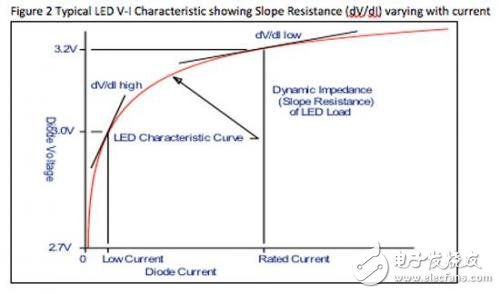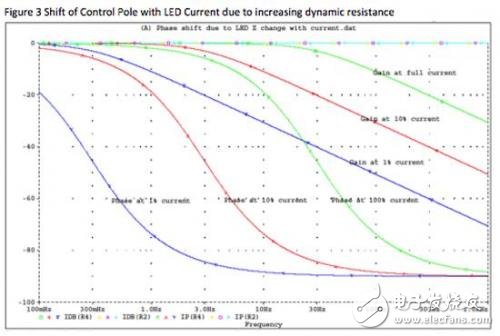The dimming LED driver will have light output stability problems at low light levels. This article will explore the root cause of this problem and propose a solution. This article does not discuss the dimming technology of bidirectional thyristors, because the low light instability is caused by different mechanisms. Dimming methods for setting LED current using communication technology include DALI, 0-10V, Zigbee and power line carrier control.
The LED driver receives a signal and uses it to set the reference current. At the same time, the control loop adjusts the LED current to match the reference current. Only with high control precision can the brightness of adjacent lamps be the same. The flickering and low light phenomenon at low light levels confuse designers.
Single-stage power factor correction
If a two-stage power converter is used, low light intensity instability will occur again. The first stage (boost or PFC-flyback) establishes a more stable voltage, and the second stage (usually a buck inverter) precisely regulates the current in the LED. Because more components are required, the energy efficiency of the two-stage solution is not as good as that of the single-stage converter. For cost considerations, LED manufacturers usually choose single-stage PFC-flyback converters.

problem
The dimming should be at least in the 20 range, providing this range of light quantity. The incandescent lamp has no problems. At low light power, the energy efficiency of the incandescent lamp is greatly reduced. The power range required in the 20 light quantity range is relatively narrow. If 40% voltage or current is supplied, the light output will drop to about 1%. The market expects LED to solve this problem.
The linear response of LEDs is much better than incandescent lamps. At low currents, the energy efficiency is higher. The human eye can discern the 5% difference between adjacent light sources and only responds to the difference expressed as a percentage, while the absolute amount of light does not cause the human eye reaction. This requires strict control of the current. At low light levels, the control accuracy requirements are higher. If you need to adjust to 1% of full output, you cannot use primary control.
Unlike incandescent lamps, LEDs have no self-filtering mechanism. The thermal capacity of the filament of an incandescent lamp is a good AC filter, while the LED requires an external filter circuit. A common solution is to connect a large electrolytic capacitor directly to the LED, and the filtering effect is good.
The capacity of the electrolytic capacitor is determined according to the requirements of light ripple. If the ripple current is less than 10% rms (approximately 28% pp), the human eye feels that the light quality is the same as pure DC. (In addition, if the ripple current is higher than 10%, the ENERGY STAR logo requires a statement on the lamp.)
LED has a dynamic resistance (slope resistance), its size is about 1/10 of the apparent V / I resistance. Figure 2 shows the VI curve of a typical LED.

Therefore, if the ripple current is less than 10% RMS, the capacitor must control the voltage on the LED within 1%. The required values ​​are:

Unfortunately, the capacitor is still part of the control loop. The capacitor and LED dynamic resistance set the control loop pole to about 30 Hz. Therefore, at this frequency, the capacitance increases by 45 degrees of phase lag, reducing the loop gain by 6dB. We will discuss this issue later. The figure below details the gain and phase shift due only to the polarity point of the LED control loop.

Note that the dynamic impedance of the LED increases as the current decreases. Unfortunately, this moves the control loop pole to the left. At 10% current, the corner frequency is about 3 Hz. At 1% current, the corner frequency is about 0.3 Hz. Note that for the PFC stage, a typical control loop has a crossover frequency of 3Hz to 20Hz.
It is unreasonable to design a control loop whose pole is movable within this range. The only feasible solution is a design with a crossover frequency of 0.03 ~ 0.1Hz, but the control loop will become very slow.
We are 730nm LED manufacturer from China.
There are many other shapes or color of lens for your choose. Customized infrared LED are available
For the Through-hole Light Emitting Diode 730nm LED,
We can customize the shape, the lighting angle, the number of emitting source, the flat pin LED and braided LED. Such as: infrared 5mm 730nm LED with 5 degree, infrared 5mm 730nm LED with 20 degree, infrared 5mm 730nm LED with 30 degree, infrared 5mm 730nm LED with 45 degree, infrared 5mm 730nm LED with 60 degree, infrared 5mm 730nm with 90 degree, infrared 5mm 730nm LED with 120 degree. Infrared 3mm 730nm LED with 3 degree, infrared 3mm 730nm LED with 20 degree, infrared 3mm 730nm LED with 30 degree, infrared 3mm 730nm LED with 45 degree, infrared 3mm 730nm LED with 60 degree, infrared 3mm 730nm with 90 degree, infrared 3mm 730nm LED with 120 degree ect.
For the SMD LED 730nm LED,
We can supply dual-chip infrared LED, three-chip infrared LED, multi-chip infrared LED, high voltage LED, flashing infrared LED and variety of size SMD LED. For instance: 3528 SMD infrared 730nm LED, 2835 SMD infrared 730nm LED, 3014 SMD infrared 730nm LED, 1206 SMD infrared 730nm LED, 3020 SMD infrared 730nm LED.
There are also have many other shapes to choose, like the 5050 SMD infrared LED, the 5730 SMD infrared LED ect. You can choose any one of them for your requirement.
730nm led is a infrared LED( IR LED ). Common infrared LEDs are like: 715nm IR LED, 720nm IR LED, 730nm IR LED, 740nm IR LEDl, 750nm IR LED and so on.
We supply variety of 730nm IR LED(Infrared LED) products. Including Through-hole 730nm LED, SMD 730nm LED and high-power 730nm LED. We can also produce 730nm LED according to your requirement.
We will do the High temperature resistance testing and 10 hours ageing treatment before the product out off the factory, which can ensure the stability of each product.
Our LED products have 5 year warranty.
We are the best supplier for your light-emitting diode.
730nm LED
730nm LED, 730nm Infrared LED, 730nm IR LED, 730nm Light Emitting Diode
Shenzhen Best LED Opto-electronic Co.,Ltd , https://www.bestsmd.com
![<?echo $_SERVER['SERVER_NAME'];?>](/template/twentyseventeen/skin/images/header.jpg)